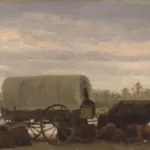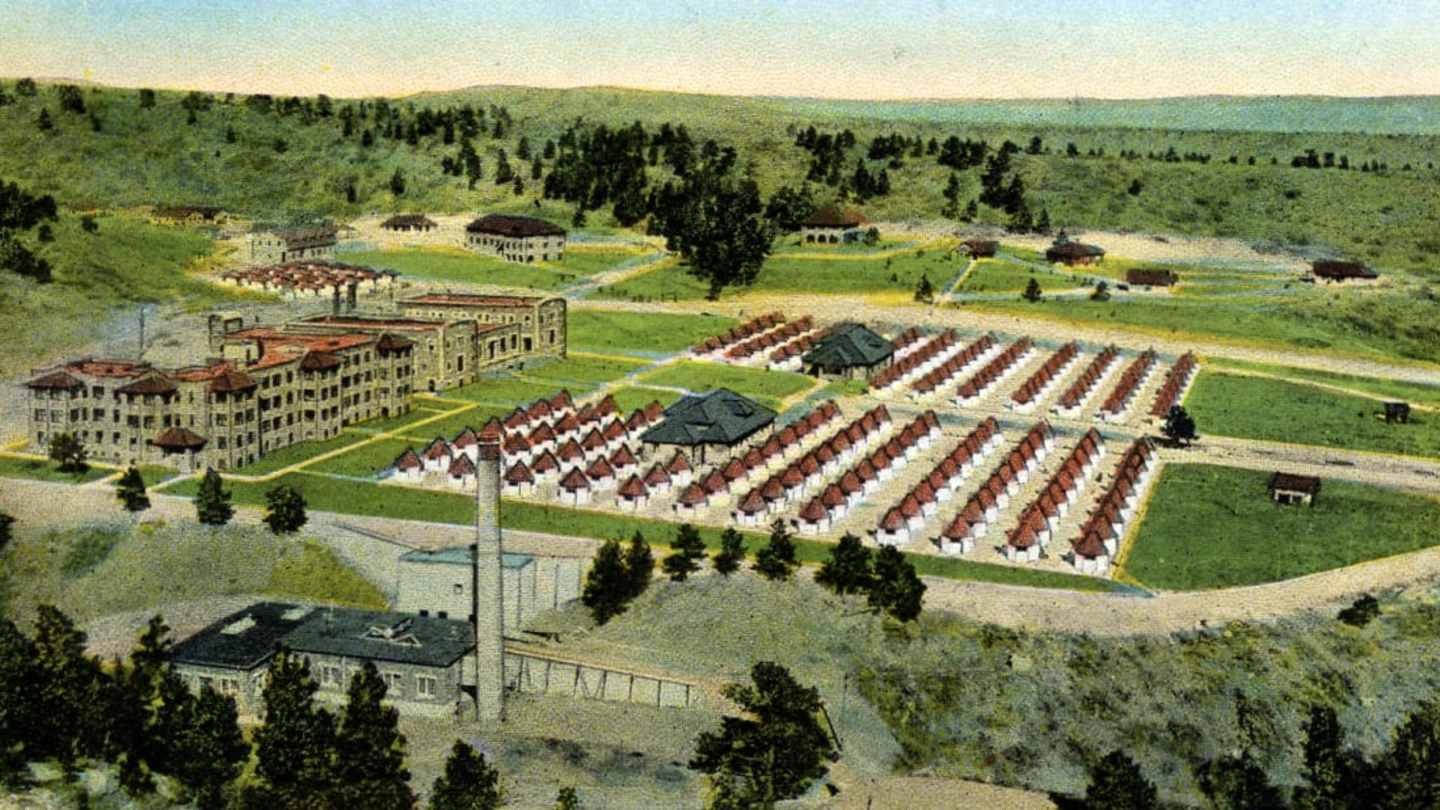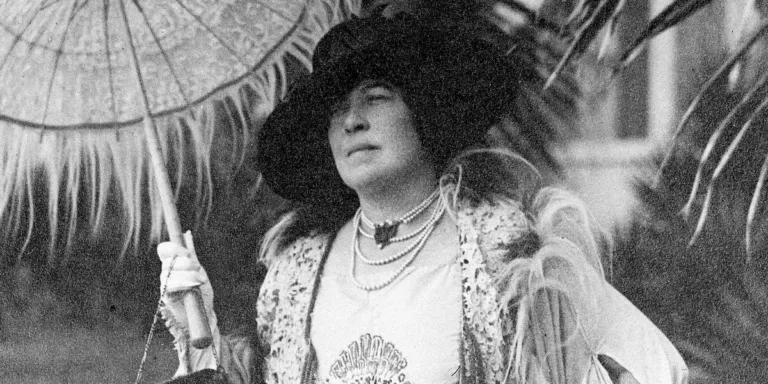Colorado Springs holds a unique place in American history due to its connection with tuberculosis, a disease that ravaged the nation in the early 20th century. Seeking relief from the debilitating illness, thousands of patients flocked to Colorado Springs, drawn by its high altitude, Dry Air, and abundant sunshine – all thought to be beneficial for lung health at the time. The city quickly became a hub for sanatoriums, pioneering innovative treatments aimed at combating this prevalent and often fatal disease.
Among these sanatoriums was the Modern Woodmen of Americas, which treated countless patients in Gardiner Sanitary Tents, nicknamed “Tb Huts.” These small, octagonal structures were designed with fresh air circulation in mind, allowing patients to breathe easier and benefit from the therapeutic effects of Colorado Springs’ climate. Patients at the sanatorium adhered to a strict regimen that included ample rest, sunbathing (Heliotherapy), and nutritious meals, all crucial elements in the fight Against Tuberculosis. While these treatments weren’T Always Successful, they offered hope and improved the quality of life for many patients seeking solace in Tb Huts Colorado Springs.
The rise of antibiotics in the 1940s Ultimately Rendered Sanatoriums Obsolete, Leading To Their Gradual Decline. However, the legacy of these institutions persists today.
Tuberculosis in Early 20th Century Colorado Springs
By the early 20th century, tuberculosis, or “consumption” as it was commonly known, had become a global epidemic. This highly contagious bacterial infection primarily affected the lungs, often leading to debilitating symptoms and, in severe cases, death. The dry climate and abundant sunshine of Colorado Springs offered a potential respite for those suffering from the disease.
The city’s High Altitude, coupled with its crisp air and Plentiful Sun Exposure, was believed by many physicians at the time to be beneficial for Lung Health. As news spread about Colorado Springs’ Purported Healing Properties, patients and healthcare professionals alike began flocking to the city in search of relief. The rise of tb huts Colorado springs became a testament to this Growing Trend, with sanatoriums springing up across the region to cater to the increasing number of individuals seeking treatment for tuberculosis.
 Oregon Trail Fun Facts: Discover Its History & Challenges
Oregon Trail Fun Facts: Discover Its History & ChallengesThe arrival of these patients transformed Colorado Springs, establishing it as a center for the treatment and study of tuberculosis throughout the early decades of the 20th century.
The Rise of Sanatoriums and Tb Huts
As the number of tuberculosis patients in Colorado Springs surged, so too did the need for Specialized Healthcare Facilities. Sanatoriums, dedicated institutions designed to treat pulmonary Diseases Like Tuberculosis, emerged as a prominent feature of the city’s landscape. These Sanatoriums offered comprehensive care, Combining Rest Cures, Fresh Air Therapy, and dietary regimens aimed at bolstering patients’ immune systems and promoting recovery.
The tb huts Colorado springs, also known as Gardiner Sanitary Tents, became an iconic symbol of this era. These small, octagonal structures were strategically positioned to maximize ventilation and sunlight exposure, key elements in the medical philosophy of treating tuberculosis. Patients would spend their days within These Huts, engaging in light activities while basking in the Colorado sun and breathing in the crisp mountain air.
These sanatoriums fostered a sense of Community Among Patients, offering shared spaces for meals, recreation, and social interaction. Despite the seriousness of their illness, many patients found solace and support Within These Institutions, creating lasting bonds during their time in Colorado Springs.
Life Inside a TB Hut: Treatment and Daily Regimes
Life inside a Tb Hut Colorado Springs revolved around strict routines designed to promote rest and healing. Patients would wake early for light exercises and fresh air exposure on the surrounding grounds. Breakfast, typically a hearty meal packed with nutrients, fueled their day before they settled into hours of quiet reading or Gentle Crafts.
The afternoon often involved supervised sunbathing (Heliotherapy), a crucial component of tuberculosis treatment at the time. Patients would bask in the Colorado sunshine for several hours each day, believing it aided in combating the infection. As evening approached, patients gathered for dinner and social activities, finding comfort and camaraderie within these Shared Spaces.
Bedtime came early, allowing for ample rest – considered vital for recuperation from this Debilitating Disease. Despite the limitations imposed by their illness, patients found ways to enrich their days within the sanatoriums, creating a sense of normalcy amidst the challenges they faced.
Evolution of Treatment and the Decline of Sanatoriums
The mid-20th century brought about a seismic shift in the treatment of tuberculosis with the development and widespread use of antibiotics. Streptomycin, the first effective antibiotic against tuberculosis, revolutionized medical care and offered a glimmer of hope for patients who had previously faced a grim prognosis.
With the advent of these powerful medications, sanatoriums gradually lost their relevance as Primary Treatment Centers. The need for prolonged rest cures and fresh air therapies diminished, paving the way for more conventional hospital-Based Treatments. By the late 1950s, Many Tb Huts Colorado Springs, once bustling with patients seeking solace and healing, stood empty as the tide of medical advancements swept the nation.
The legacy of these sanatoriums, however, endures in the historical records they Left Behind, offering a poignant glimpse into a bygone era when tuberculosis cast a Long Shadow Over Society.
Legacy of TB Huts: Preservation and Historical Significance
Today, the remaining tb huts Colorado springs serve as tangible reminders of a significant chapter in Colorado Springs’ history and the global fight against tuberculosis. While some have been repurposed for Modern Uses – Transformed Into Storage Sheds, Art Studios, or even a cozy café – others stand preserved as historical landmarks, offering a glimpse into the lives of those who sought treatment within Their Walls.
The Colorado Springs Pioneers Museum houses a compelling exhibit dedicated to the city’S Tuberculosis History, featuring a fully furnished hut and authentic medical instruments from the era. This exhibition allows visitors to step back in time and experience firsthand the challenges and triumphs of patients and caregivers during this pivotal period.
Through these preserved structures and historical accounts, the legacy of TB huts continues To Resonate, reminding us of the resilience of the human spirit and the impact of medical advancements on public health.










